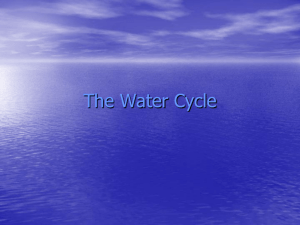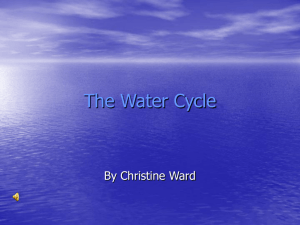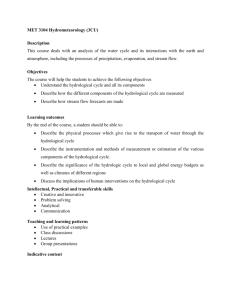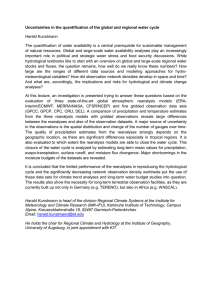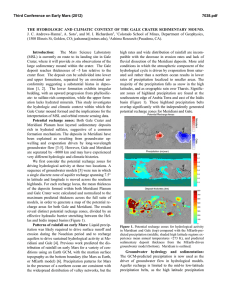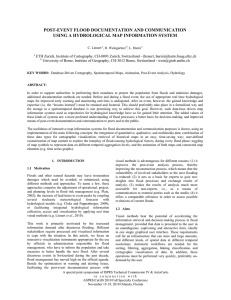The Hydrological Cycle
advertisement
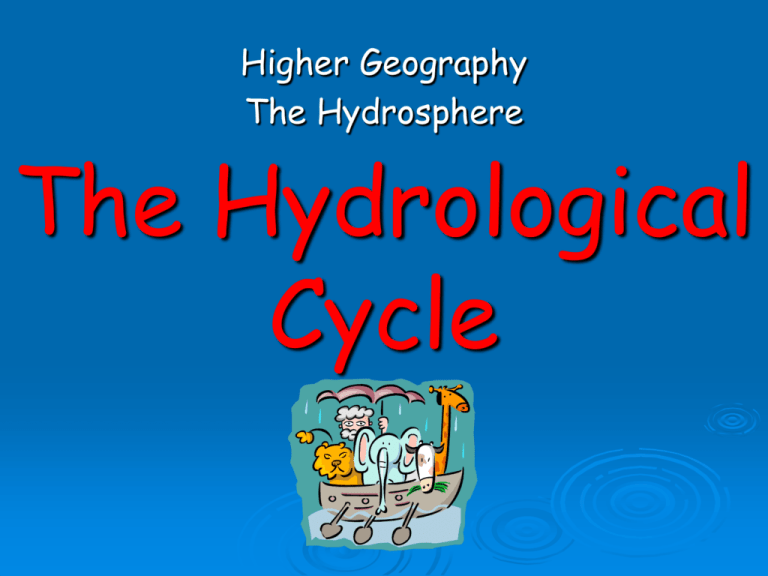
Higher Geography The Hydrosphere The Hydrological Cycle The Hydrological Cycle What you need to know: Be able to draw a diagram of the hydrological cycle. Describe its main elements. Explain how balance is maintained within the system. What is the Hydrological Cycle? The hydrological cycle is the system which describes the distribution and movement of water between the earth and its atmosphere. The model involves the continual circulation of water between the oceans, the atmosphere, vegetation and land. http://www.metoffice.gov.uk/education/teachers/key-stage3/lessonplan-hydrologicalcycle/animation The Hydrological cycle Describing the Cycle: Evaporation Solar energy powers the cycle. Heat energy from the sun causes evaporation from water surfaces (rivers, lakes and oceans) and…. … transpiration from plants. Transpiration is essentially evaporation of water from plant leaves. Evapotranspiration – water loss to the atmosphere from plants and water surfaces. Condensation The warm, moist air (containing water vapour) rises and, as it cools, condensation takes place to form clouds. Advection Wind energy may move clouds over land surfaces where … Precipitation …precipitation occurs, either as rain or snow depending on altitude. Stemflow (red arrows) – Precipitation flows down stems and branches to ground Throughflow (yellow) Rate at which precipitation flows through branches Run off / Overland flow The rainwater flows, either over the ground (run off) into rivers and back to the ocean, or… Groundwater flow … infiltrates downwards through the soil and rocks where it is returned to the oceans through groundwater flow. Groundwater flow Hydrological Cycle Bingo Split your page into 8 squares and write one word from the list below in the each square Condensation Ground Water Infiltration Evaporation Precipitation Percolation Run off Evapotranspiration Interception Saturation The Hydrological Cycle The water table Also called the hydrological cycle The water cycle balance Usually the water cycle is in balance, and the amount of precipitation falling will slowly soak into the ground and eventually reach the rivers. However, if rain falls for a long period of time or if the ground is already soaked or saturated with water then the chance of flooding is increased. Under the ground A closed system The hydrological cycle is a good example of a closed system: the total amount of water is the same, with virtually no water added to or lost from the cycle. Water just moves from one storage type to another. Water evaporating from the oceans is balanced by water being returned through precipitation and surface run off. Your Turn Write down the meaning of the following words: Infiltrate Groundwater flow Surface runoff Evapotranspiration Closed system Use the New Higher Geography Textbook p.10 to help you. Then complete Activity 1 (a) – (c) Human Inputs to the Cycle Although this is a closed system there is a natural balance maintained between the exchange of water within the system Human activities have the potential to lead to changes in this balance which will have knock on impacts. For example as the earth warms due to global warming the rate of exchange in the cycle (between land and sea and atmosphere) is expected to increase. Human Inputs Some aspects of the hydrologic cycle can be utilized by humans for a direct economic benefit Example: generation of electricity (hydroelectric power stations and reservoirs) These are effectively huge artificial lakes and this will disrupt river hydrology (amount of water in a river) Other Human Activities Paving, compacting soils, and altering the nature of the vegetation (including deforestation) The mining of ground water for use in agriculture and industry Large amounts of water vapour released into the atmosphere from industrial activity Large changes in vegetation by wildfire, logging, clearance for agriculture Impacts These human activities can lead to increase chances of flooding Increases in soil erosion A cooling effect on the north west of Europe (climate change) Possible higher precipitation levels in the Arctic but less in the Tropics



